Horses today are living longer and more productive lives than ever. We can thank advances in nutrition, veterinary care, and management for the extra years we get to share with our beloved equine partners. Nowadays, determining when your horse qualifies as a “senior citizen” that requires a specialized diet depends on his individual aging process.
Indeed, rather than abiding by arbitrary timetables of equine life stages (i.e., considering all horses older than 15 years of age to be seniors), veterinarians and researchers now recommend watching for signs your aging horse is no longer thriving on the diet you’ve maintained him on throughout his adult life. Robert Jacobs, MS, PhD, nutritionist and equine innovation manager at Purina Animal Nutrition, supports this practice: “Longer life spans mean that the actual age at which each horse should switch to senior feed is variable,” he explains.
Much like these animals’ athletic or reproductive careers, nutrition should be approached on a case-by-case basis. If you’re unsure about your own horse’s status, you can find common indicators he might be ready for senior feed below.
“Essentially, if your senior horse is in good condition, he does not need more than a forage-based diet with a fortified ration balancer,” says Amanda Adams, PhD, associate professor at the University of Kentucky Gluck Equine Research Center, in Lexington. “Just being ‘old’ doesn’t mean a horse needs senior feed. However, if the aged horse is in poor body condition because he’s become a hard keeper, these tips could help.”
Signs it Might Be Time to Switch Your Aging Horse to Senior Feed
- Changes in eating behavior, loss of appetite.
- Decrease in body weight or body condition.
- Changes in musculature, generally a ‘melting’ topline and/or atrophied muscles.
- Reduced immune function, frequent illness, and/or nonhealing wounds.
- Decline in energy and mobility.
- Difficulty chewing hay, quidding.
Please note that a veterinarian should evaluate any changes in a horse’s behavior or physiology to rule out disease.
Horses that score between 4 and 6 on the Henneke Body Condition Scale are considered to be in good condition:
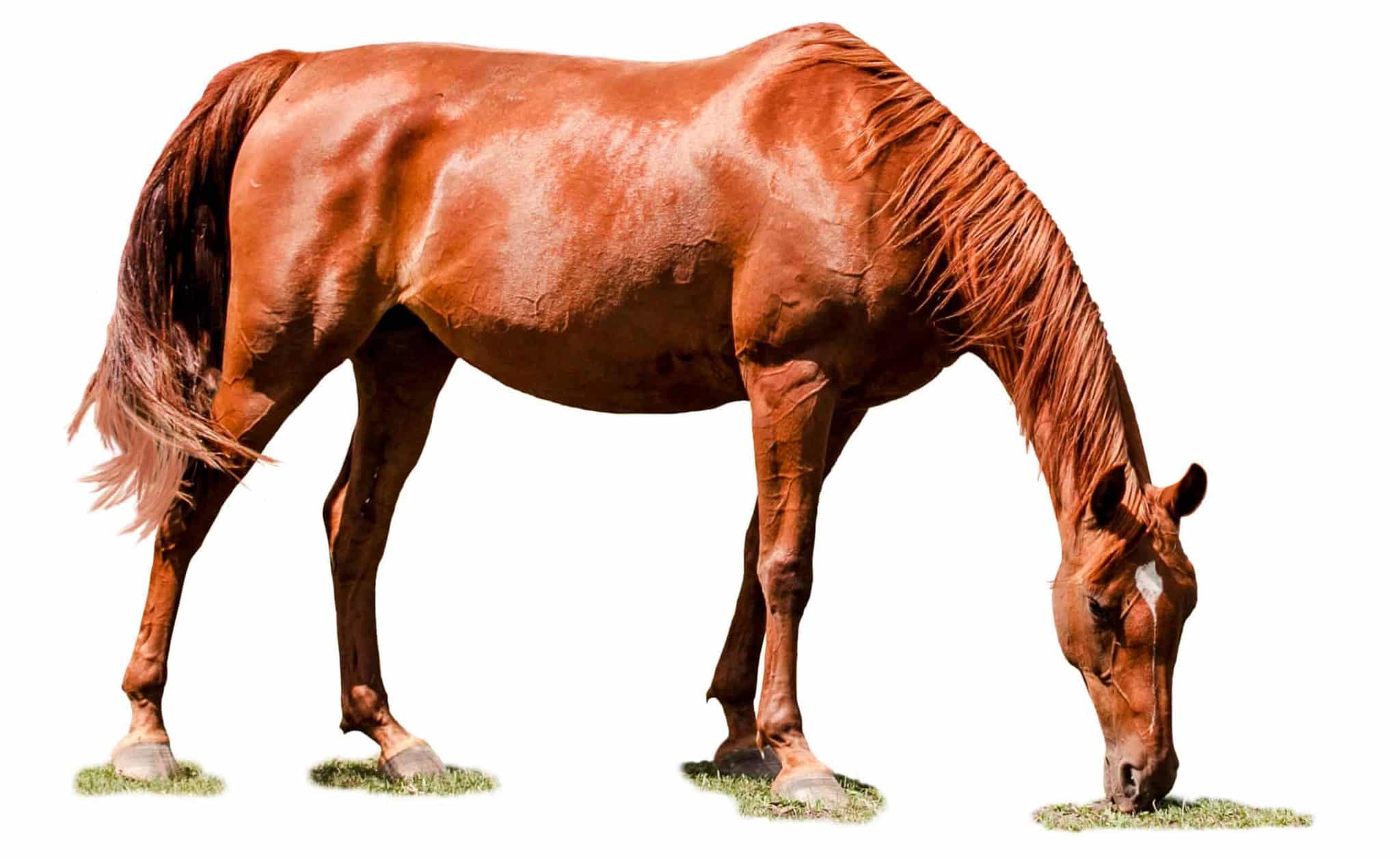
- 4 MODERATELY THIN
Negative crease along back. Faint outline of ribs can be seen. Fat can be felt along tailhead. Hip bones cannot be seen. Withers, neck, and shoulders not obviously thin. - 5 MODERATE
Back is level. Ribs can be felt, but not easily seen. Fat around tailhead beginning to feel spongy. Withers are rounded and shoulders and neck blend smoothly into the body. - 6 MODERATELY FLESHY
May have a slight crease down the back. Fat on the tailhead feels soft. Fat over the ribs feels spongy. Fat beginning to be deposited along the sides of the withers, behind the shoulders, and along the neck.

Dr. Robert Jacobs
Robert Jacobs, MS, PhD, is the equine innovation manager at Purina Animal Nutrition, in St. Louis, Missouri, where he and his team conduct innovative research focused on producing nutritional products for horses. Jacobs focuses on equine palatability and eating behavior, gastrointestinal physiology, microbiome studies, and exercise physiology in his research, as well as growth and development.
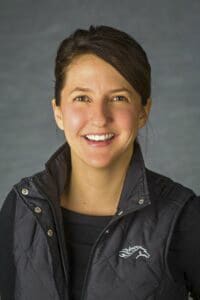
Dr. Amanda Adams
Amanda Adams, PhD, is an associate professor at the University of Kentucky’s Gluck Equine Research Center, in Lexington. She is also adjunct faculty at Lincoln Memorial University’s College of Veterinary Medicine, in Harrogate, Tennessee. Currently, her research program studies include equine immunology and endocrinology in the context of aging, obesity, endocrine diseases, laminitis, and stress.
PHOTO: istock.com
Tips for Age-Related Nutrition Challenges
1 Understand the impact of inflamm-aging.
Immune function declines naturally with age—a process known as immunosenescence. In the aging horse immunosenescence manifests as weakening immunity and translates notably to a decreased antibody response to vaccination. To add insult to injury, the aging process increases the body’s own secretion of pro-inflammatory cytokines (chemical messenger proteins) and other inflammatory mediators. This leaves many older horses dealing with a particular type of systemic (bodywide) inflammation called inflamm-aging. “Inflamm-aging is not your typical acute inflammation (such as from a wound) but, rather, low-grade and chronic,” explains Adams. “Not all horses’ immune systems age at the same rate; we are still trying to understand why this phenomenon happens more quickly in some individuals than others. What contributes to these changes—genetics, lifestyle, management, diet? We don’t have all the answers yet, but we do know that the overall goal of senior horse nutrition is to support this aging immune system.” With that goal in mind, she says, her team is working to understand if they can modulate inflamm-aging with various ingredients or compounds. “Currently, we are studying the effects of CBD (cannabidiol) on inflamm-aging in senior horses,” she says. “The preliminary results are promising, but this kind of research, when done properly, takes time.”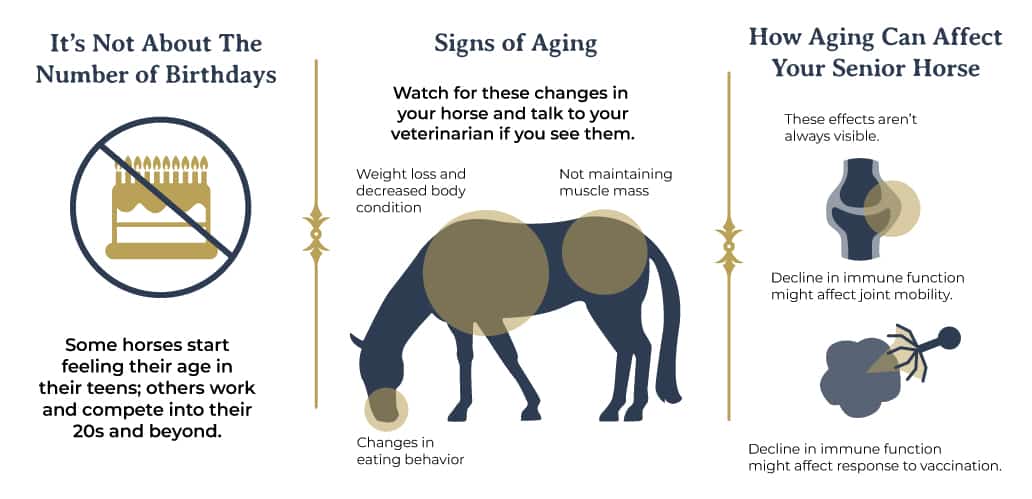
2 Take metabolic and endocrine disorders into account.
In humans there is a known correlation between inflamm-aging and both Type 2 diabetes and degenerative joint diseases (Rezus et al., 2019). Inflamm-aging in horses might also be associated with increased morbidity and mortality for a variety of chronic illnesses. Researchers are investigating whether the combined effects of immunosenescence and inflamm-aging might leave horses more susceptible to infections and inflammatory-mediated conditions. These include arthritis, laminitis, and pituitary pars intermedia dysfunction (PPID, formerly known as equine Cushing’s disease). PPID, insulin resistance (IR), and equine metabolic syndrome (EMS) are common diagnoses in older horses. Therefore, Adams recommends annual endocrine testing of all senior horses to monitor health status and adjust diet and any medications accordingly. Many of the endocrine conditions we see today were rare or nonexistent in past centuries because horses simply didn’t live long enough to develop them. Longer life spans come with more time and opportunities for immune systems and other parts of your horse to break down, so to speak.3 Consider dental issues.
Weight loss, quidding, and lack of energy can mean dentition is on the decline. Horses that have a hard time chewing long-stemmed hay still need the nutrients a forage-based diet provides, which is where owners need to get creative. In those instances, soaked hay pellets or cubes, soaked beet pulp, or soaked complete senior feeds can be good alternatives. To prolong the usefulness of your horse’s dentition, veterinarians and nutritionists alike recommend scheduling annual to biannual oral exams, especially in older horses. This allows you to address dental irregularities early, before they snowball into larger issues that affect digestion and, ultimately, body condition and overall health.Glossary of Endocrine Disorders
Pituitary pars intermedia dysfunction:
PPID is a hormonal disease caused by an enlargement in the pituitary gland’s pars intermedia (which plays a key role in regulating hormones). Horses with PPID have an increased hormone output, which causes metabolic issues.
Insulin dysregulation:
Abnormally high levels of insulin and sometimes glucose circulate in the bloodstream with this condition, putting a horse at risk of regional adiposity, obesity, and/or laminitis.
Equine metabolic syndrome:
This condition is associated with insulin dysregulation, increased fat deposition on the body, and a reduced ability to lose weight.
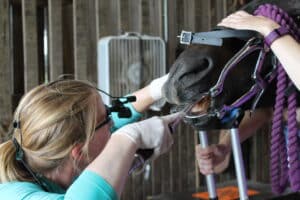
Be sure to schedule annual or biannual oral exams for senior horses. Animals with declining dentition might need soaked hay pellets, hay cubes, soaked beet pulp, or soaked complete senior feeds.
PHOTO: istock.com
Tips for Feeding Your Senior Horse
4 Cut back on sugar for horses with insulin dysregulation.
The No. 1 recommendation for feeding horses with insulin dysregulations (such as IR or EMS) is restricting their nonstructural carbohydrate (NSC) intake. Consuming large amounts of it can lead to harmful insulin peaks in the bloodstream that further contribute to IR and could push a horse over the edge into a laminitic episode. Companies have formulated feeds termed low-starch for horses prone to or diagnosed with IR. And, because obesity is the leading cause of metabolic disorders, owners of overweight horses should confer with a veterinarian to safely create a calorie deficit in the diet. During the consultation the practitioner will likely check the animal’s blood insulin levels to help guide dietary choices.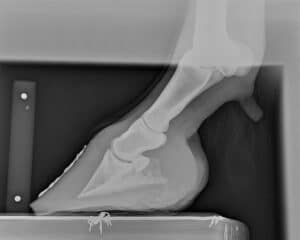
PHOTO: Courtesy Dr. Amy Rucker
Laminitis occurs when the laminae—the tissues that suspend the coffin bone within the hoof capsule—become damaged and inflamed. In severe cases they separate, releasing the coffin bone to rotate downward or sink.
5 Look for easily digested fiber, and consider complete feeds.
Again, many older equines have a reduced ability to consume forage. “This is often the No. 1 indicator that they should be switched to a senior complete feed,” says Jacobs. “Good senior horse diets are manufactured specifically to ensure that senior horses are able to consume and optimally utilize the nutrients in those feeds.“Many older equines have a reduced ability to consume forage. This is often the No. 1 indicator that they should be switched to a senior complete feed.”
—Dr. Robert Jacobs
“Some—but not all—senior feeds are ‘complete’ feeds, so check the tag on the bag carefully,” he adds. Complete diets will be labeled as such; they are designed to fulfill 100% of the horse’s nutritional needs without supplementation of hay. These are high-fiber, highly digestible formulations and provide all dietary needs to senior horses that have poor dentition and can’t chew forage, our sources explain. On the other hand, noncomplete concentrate labels will indicate that supplementation with forage is necessary.
What to feed is only half the equation. How much to feed is the other half. Calculating the quantity of a certain feed to scoop into your horse’s bucket daily depends on his weight, body condition, and activity level.
“All feeds have a minimum daily feeding rate that is dictated by three factors,” explains Jacobs. Scroll through the photos below to learn what these are:
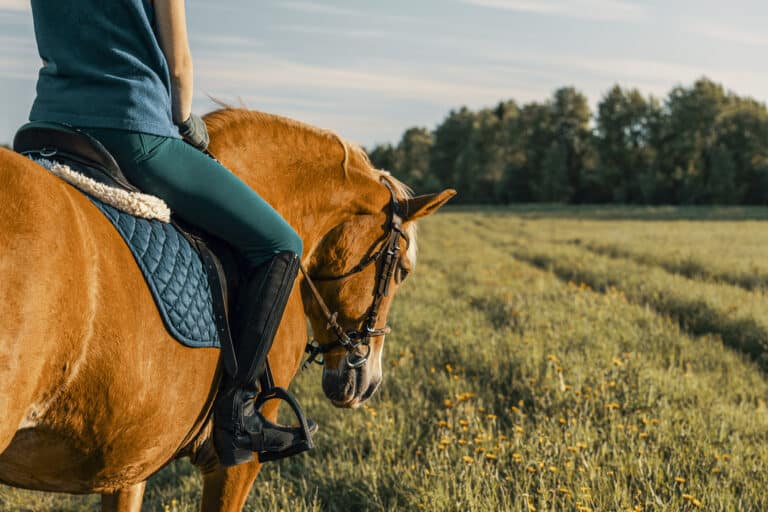
The individual horse’s nutrient requirements based on his workload, as detailed in the National Research Council’s (NRC) guidelines.
PHOTO: istock.com
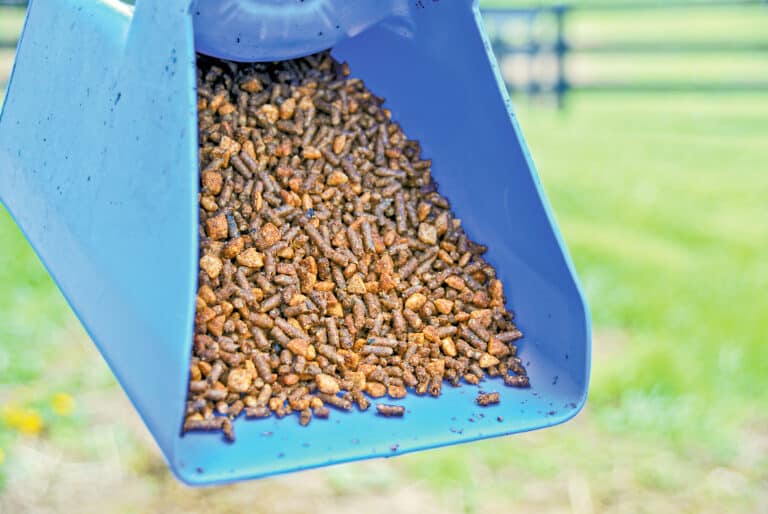
The nutritional profile of the feed. Because they cover the concentrate and forage portions of the diet, complete feeds have a higher feeding rate than typical concentrate diets.
PHOTO: The Horse Staff
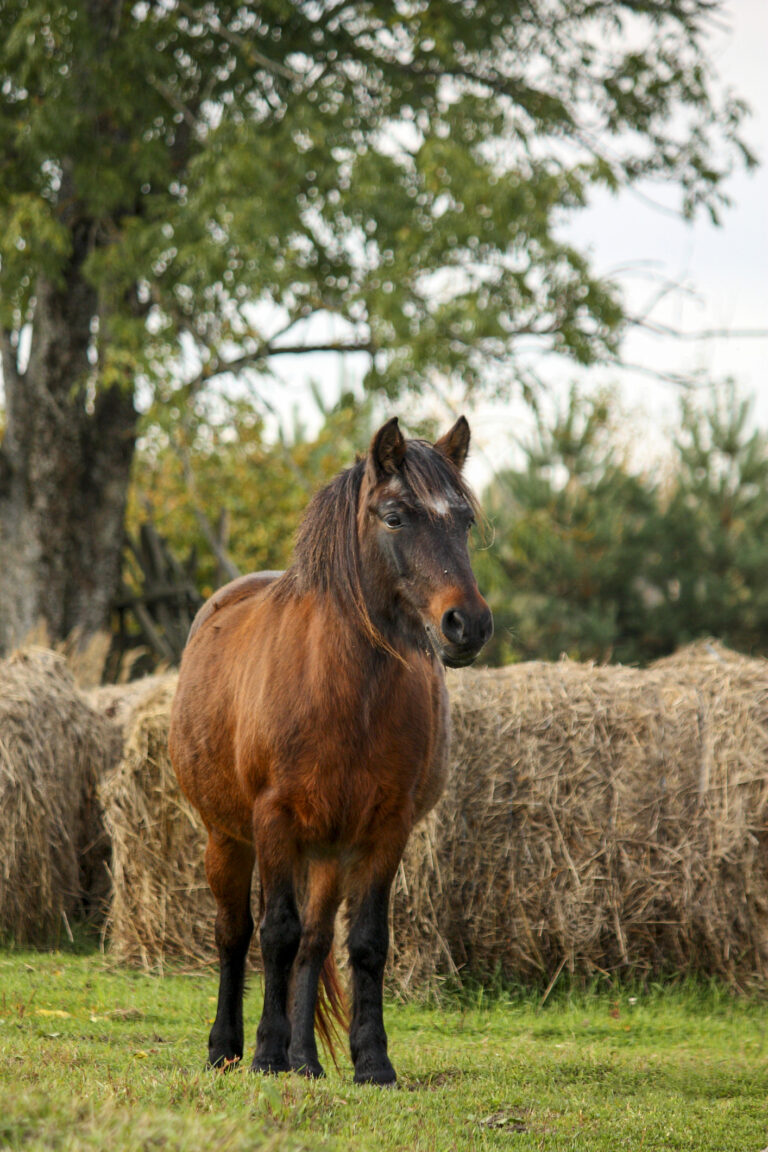
The horse's body weight.
PHOTO: istock.com
6 Understand the value of prebiotics and probiotics.
Horses of all ages depend on a robust microbiome to keep their digestive tract healthy. Certain probiotics and prebiotics (beneficial microorganisms and the fiber sources they feed on, respectively) can help support not only gut health but also immune function and metabolism in aging horses. These live cultures are often added to the diet as supplements, but certain commercially formulated senior feeds incorporate them directly into their formulas. Much like supplements as a whole, “it’s important to understand that not all prebiotics and probiotics are created equally,” says Jacobs. “Compounds must be evaluated in senior horses to determine their efficacy.” “Research-based evidence is crucial to determine whether what you are feeding or supplementing your senior horse’s diet with is actually effective or not,” adds Adams.How Much Complete Senior Feed Do I Need to Give My Horse?
Complete feeds replace forage and should be fed at a rate of 1.5-2.0% of body weight (BW). That’s approximately 18-24 pounds for a 1,200-pound horse. In contrast, concentrate diets are fed at a rate of 0.3-0.4 pounds/100 pounds BW (3-4 pounds for a 1,000-pound horse), which is fed in addition to 1-2% BW of forage.
“Feeding complete feeds as directed is crucial to make sure that you are providing the right amounts and balance of vitamins, minerals, and protein,” says Jacobs.
PHOTO: Courtesy Purina
Looking Ahead: The Future of Senior Horse Nutrition
Our horses are living longer lives and experiencing the effects of their immunity declining and bodywide inflammation rising. Luckily, several promising new studies looking into the use of nutraceuticals and diet to manage inflamm-aging are on the horizon. For the time being, Adams, who is at the heart of this research, recommends ensuring you feed your senior horse a balanced diet that meets all his health and nutritional needs.
Sponsor’s Message
Do you have a senior horse that’s trying to age gracefully?
Purina Animal Nutrition was the first feed company to formulate a commercial feed specifically to meet the needs of the senior horse. Since its launch, Purina Equine Senior® has undergone extensive testing and innovation, resulting in it being the No. 1 veterinarian-recommended feed for senior horses.
Both Purina Equine Senior® and Purina Equine Senior® Active are scientifically formulated and backed by research in senior horses. Both products contain ActivAge® Prebiotic Technology, a unique yeast-derived prebiotic that contains high levels of antioxidants, polyphenols, amino acids, vitamins, minerals, and other beneficial compounds.
Purina has developed two types of feed for senior horses to meet the needs of older horses:
- Purina Equine Senior® is a complete feed formulated to replace the senior horse’s entire diet, including the forage component. When fed as the sole component of the horse’s diet, it should be fed at a minimum of 1.35% of the horse’s body weight (BW) each day. When fed with forage, Purina Equine Senior® should be fed at a minimum of 0.6 pounds per 100 pounds BW daily.
- Purina Equine Senior® Active is not a complete feed. Rather, it is formulated as a concentrate feed designed to supplement horses consuming pasture, hay, or other types of forage. Adequate amounts of good-quality forage must complete the diet.
Both feeds contain a blend of fibers that are ideal for older horses’ digestive health.
In multiple trials horses fed Purina Equine Senior® with ActivAge®—Purina’s unique prebiotic supplement—experienced a decrease in overall systemic inflammation and even an improved response to vaccination. They also showed an improved metabolic response, along with a decreased inflammatory response to a challenge in their joints.
And that’s not all: Purina Equine Senior® is manufactured to exact parameters that promote optimal chewing for the senior horse with impaired dentition, as proven through multiple research trials. Purina continues to improve Equine Senior® and Equine Senior® Active to meet the unique needs of the senior horse, allowing these animals to enjoy longer, more comfortable years.
“I’ve found that feeding Purina Equine Senior® is a really good option for senior horses,” says Amanda Adams, PhD, associate professor at the University of Kentucky Gluck Equine Research Center, in Lexington. “I personally keep my 34-year-old Quarter Horse on this diet and he looks and feels great. I’ve had him for 30 years!”
Credits:

Lucile Vigouroux, MSc
Lucile Vigouroux, MSc, is a New-York-based freelance author with a passion for equine health and veterinary care. She holds a master’s degree in equine performance, health, and welfare from Nottingham Trent University, in the U.K., and an equine veterinary assistant certification from AAEVT. Vigouroux also runs a small equine PEMF therapy business. Her lifelong love of horses motivated her to adopt her college care horse, Claire, upon graduation.Editor-in-Chief: Stephanie L. Church
Digital Editor: Shoshana Rudski
Editorial Team: Alexandra Beckstett
Art Director: Claudia Summers
Web Producer: Jennifer Whittle
Publisher: Marla Bickel





